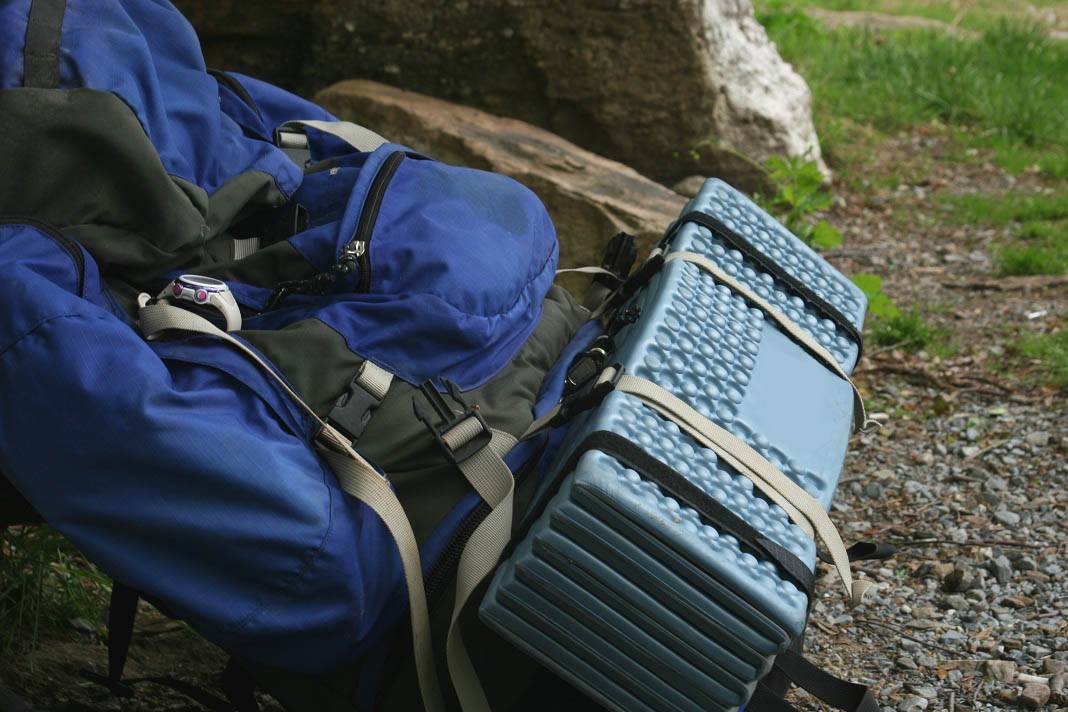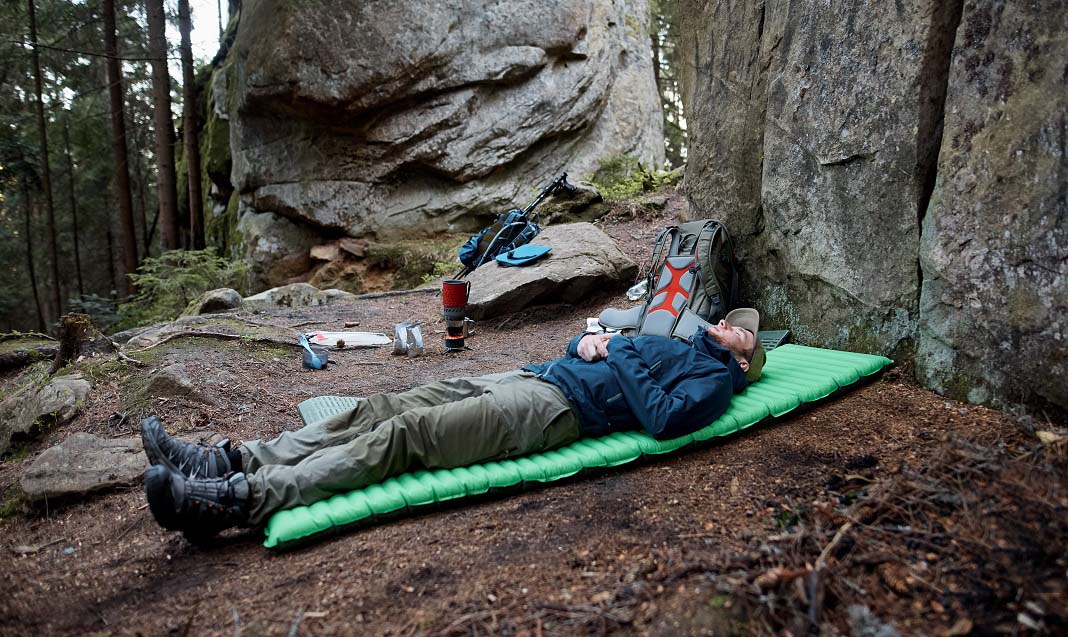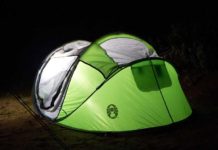For many experienced hikers, sleeping pads are must-have items for their hiking luggage. A good sleeping pad can not only allow you to sleep and rest comfortably during your trip but also keeps you warm throughout the night.
At the end of an exhausting day, what could be better than a nice comfy sleeping pad at your disposal to sleep and rest on anyway? With so many options for sleeping pads on the market, how do you know which one is the best sleeping pad for your need?
To save you from the struggle of having to look at hundreds of sleeping pad options, we have compiled the list of top 10 best sleeping pads of 2024 that are guaranteed of both quality and comfort for your decision.
Our Team's Picks
Sleeping Pad Comparison Table
Preview | Sleeping pads | Type | Rating |
|---|---|---|---|
Closed Cell Foam Pad | 4.5/5.0 | ||
Self Inflating | 4.0/5.0 | ||
Air Pad | 4.8/5.0 | ||
Self Inflating | 4.5/5.0 | ||
Self Inflating | 4.6/5.0 | ||
Closed Cell Foam Pad | 4.5/5.0 | ||
Air Pad | 4.1/5.0 | ||
Air Pad | 5.0/5.0 | ||
Air Pad | 4.7/5.0 | ||
Closed Cell Foam Pad | 4.6/5.0 |
Sleeping Pad Reviews
Below are the best sleeping pad list that I took time and effort to find out. Hopefully, you can choose a suitable sleeping pad among them.
#1. Klymit Sleeping Pad
Best for: Perfect for overnight camping and trekking
Weight: 18.1 oz
Type: Air Pad
Features: A great Klymit sleeping pad with a V-shaped design for maximum body support, super lightweight with incredibly compact pack size, made from highly durable materials (75D polyester)
Insulation capacity: R-Value 1.3
PROS: Great body support, lightweight, comfortable, easy to inflate and deflate, patch kid and stuff sack provided
CONS: Not very supportive for side sleepers, difficult to roll and pack the deflated sleeping pad into the provided sack
#2. Outdoorsman Lab Ultralight Sleeping Pad
Best for: Perfect for backpacking, hiking, camping, hammock camping or in a sleeping bag
Weight: 16 oz
Type: Air Pad
Features: A fantastic sleeping pad that can be used for a wide range of travel purposes, ultra lightweight and ultra-compact, designed with diamond shaped air cells that are adaptable to body shapes, made from 20D woven nylon
Insulation capacity: R-value 1.3
PROS: Extremely light and compact, usable for multi purposes, quick to inflate, weather proof
CONS: Not capable of holding air in for a long time, a bit noisy when lying on the pad
#3. Therm-a-Rest Neoair Xlite Sleeping Pad
Best for: Mountain hiking, trekking, backpacking
Weight: 8, 12, 16 oz
Type: Air Pad
Features: A wide inflatable air sleeping pad with non-slip fabric and heat-capturing technology for added warmth, suitable for 3-season traveling, available in three sizes with stuff sack and repair kit
Insulation capacity: R-value 3.2
PROS: Ultralight with strong insulation capacity (surprisingly high R-value), comfortable for side sleepers
CONS: The pad can create loud noise from movements and is a bit pricier compared to other air sleeping pads
#4. Sea to Summit Ultralight Insulated Sleeping Pad
Best for: Minimalist hiking during warm weather
Weight: Approx. 16 oz
Type: Air Pad
Features: A super lightweight air sleeping pad with mattress-style baffles
Insulation capacity: R-value 0.7
PROS: Very light and compact, supportive and comfortable thanks to the new air sprung cell technology, stuff sack and repair kit included
CONS: A bit thin and very low insulation capacity, not suitable for camping or hiking in the cold
#5. Therm-A-Rest Z Lite Sol Foam Camping Mattress
Best for: Thru-hiking, trekking
Weight: From 10 oz to 14 oz depending on size
Type: Closed Cell Foam Pad
Features: A classic closed cell foam pad from the Thermarest sleeping pad ranges that integrates both comfort and durability at a surprisingly lightweight
Insulation capacity: From 2.2 to 2.6 depending on size
PROS: Solid and extremely durable, comfortable and ideal for thru hiking, arguably the best foam sleeping pad
CONS: A bit stiff and firm, a bit more expensive than other similar closed cell foam pads
#6. Hit Delights Closed Cell Foam Sleeping Pad
Best for: Camping, thru-hiking, backpacking
Weight: 5.82 oz
Type: Closed Cell Foam Pad
Insulation capacity: Negligible
Features: An extremely lightweight sleeping pad that is made to last with two layers of insulation
PROS: Highly durable and easy to pack and fold, super lightweight, less prone to damage and punctures
CONS: Too thin and not very comfortable
#7. ALPS Mountaineering Foldable Foam Mat
Best for: Mountain camping, thru hiking
Weight: 10 oz
Type: Closed Cell Foam Pad
Features: A foldable sleeping mat of a small packing size that offers comfort and durability at a reasonable price
Insulation capacity: Negligible
PROS: Lightweight and durable, easy to pack and fold
CONS: Not very comfortable
#8. TNH Premium Self Inflating Sleeping Pad
Best for: Camping, hiking
Weight: 2.2 pounds
Type: Self Inflating
Features: A trusted self-inflating sleeping pad that offers great comfort, easy inflation and warmth for remote camping trips
Insulation capacity: 4
PROS: Comfortable, insulating, thick pad offering lots of cushion, weather proof, lifetime warranty
CONS: A bit bulky and not suitable for light travel
#9. KAMUI Self Inflating Sleeping Pad
Best for: Sleeping in a tent, family camping, car camping
Weight: 3.5 pounds
Type: Self Inflating
Features: A simple self-inflating pad that offers ideal thickness and comfort for family and car camping
Insulation capacity: Approx. 5
PROS: Impressive stability and durability, thick and strong, comfortable, good insulation capacity, arguably the best sleeping pad for side sleepers
CONS: Heavy and bulky, not recommended for thru hiking or light travel
#10. REDCAMP Self-Inflating Sleeping Pad
Best for: Tent camping
Weight: 4.2 to 4.4 pounds depending on sizes
Type: Self Inflating
Features: A highly reasonable option for a self-inflating sleeping pad plus an attached pillow that offers great body support and extra comfort
Insulation capacity: Not available
PROS: Very comfortable, affordable, good value for the price, leakage-proof
CONS: A bit slippery, too heavy for backpacking despite the manufacturer’s claim
How To Choose The Best Sleeping Pad

A good sleeping pad can make a huge difference to the overall success of your trip, whether it’s a casual trekking trip or a romantic camping. It’s virtually impossible to say no to the warmth and comfort of a well-constructed sleeping pad.
Once you are able to find your desired sleeping pad, you won’t have to worry about how to get through a long, cold night. The best sleeping pad will not only help you stay warm in a tent but also boost the quality of your sleep.
As important as it is, it can be a challenge for an inexperienced traveler to find the best sleeping pad for his or her need. There are just too many questions that come to mind, for instance, which type should you go with, or does size matter more than weight, or can an ultra lightweight pad provide you with enough warmth you need?
Whatever your purpose is, there are certain points to consider when you decide to shop for a sleeping pad. Check out our guidelines below to find answers to your questions and be able to make an informed decision on which one is the best sleeping pad for your trip.
1. Types of sleeping pads
The first thing you need to know about sleeping pads is there’s more than just one type of sleeping pads. Like many other outdoor gears, a sleeping pad is manufactured to cater for different types of travel needs. Therefore, it is categorized into 3 types based on its filling for easier selection, namely air pad, self-inflating pad and closed cell foam pad.
The most basic type of sleeping pads is the closed cell foam pad. The name itself already indicates the construction of this sleeping pad type. Since the foam inside the pad is closed cell, it is usually quite bulky and takes a good amount of space. You can roll it up or fold it to save space.
The best part about a closed cell foam pad is how it is less prone to damage or external force, which means you won’t have to be concerned about leakage or punctures. You can even use this pad to sit every once in a while. And the worst part? Since it’s made of tiny closed air cells, it is not as soft and as comfortable as other types.
While the closed cell foam pad is the cheapest type of sleeping pads out there, the air sleeping pads are a lot pricier. Unlike the closed cell foam pads, the air pads are completely filled with air, which makes it superbly lightweight and compact.
Thus, air pads are ideal for backpackers who prefer to travel as light as they can. However, they do not offer as much warmth as foam pads, so it may not be wise to choose an air sleeping pad for a winter hiking trip. Sleeping on an air pad can sometimes cause noise, which is a minus for difficult sleepers.
If you are looking for a hybrid type of sleeping pads to get the best of both worlds, you can consider the 3rd type - the self-inflating pad. Think of the self-inflating pad as the middle option, which allows you to enjoy the warmth of a closed cell foam pad and the light weight of an air pad. As the name suggests itself, this type of sleeping pad can blow itself up automatically by opening its valve.
There are a couple of advantages with the self-inflating pad, such as good insulation and comfort at a reasonable price. A self-inflating pad will cost you more than an air pad but a lot less than a closed cell one. In terms of weight, a self-inflating pad is rather heavy and more vulnerable to puncture. Nevertheless, this type is considered the best car camping sleeping pad out there.
Once you’ve learned basic features of each type including their pros and cons, you will be able to choose the best sleeping pad based on the following pointers.
2. Your intended use
One major factor that will influence your choice of sleeping pads is how you are going to use the pad for. Generally speaking, for a backpacking or quick hiking trip, you may want to consider getting yourself an air sleeping pad.
That way you can save a lot of space inside your backpack while still ensuring a decent sleep for yourself, not too bad, right? If you are looking to make a car camping trip, size and weight won’t be an issue anymore,and a little extra weight won’t bother you much.
Thus, you can freely choose a self-inflating sleeping pad for optimal comfort. They are heavier than air pads, but they offer excellent warmth and comfort. If you are looking to do a thru-hiking or a long trekking trip, you may want to prioritize durability over weight and size.
While you would like to keep your belongings as light as possible, what truly matters is how your travel gears are able to last as long as your trip. The same for your sleeping pad. That’s why thru-hikers are usually recommended to opt for a closed cell foam pad for extra durability.
3. Insulation capacity
After figuring out the suitable type based on your intended use, you should also pay attention to the insulation capacity of the sleeping pad, which is demonstrated through the R value. The higher the R value is, the warmer your sleeping pad is going to be. If you plan to travel during winter, a sleeping pad with high insulation capacity is a must.
4. Sleeping pad construction and measurements
Another important factor to consider is the way the sleeping pad is constructed as it will affect the level of comfort. Take a look at the width and length of the sleeping pad and consider your body measurements to figure out which will work best for you.
If you travel with a partner, you should choose one that can accommodate you and your partner. Some sleeping pads are specially constructed with large side baffles to offer extra support and prevent you from rolling off.
So if you are a restless sleeper that tends to turn, go for those that offer this feature. The pad surface can be an issue as well, as some specific materials can be slippery and noisy. The advice is to avoid slippery materials for a safe and restful sleep.
Conclusion
It is impossible to pick the best sleeping pad from dozens of models and products available in the market, especially when each traveler will have his or her personal preferences.
We hope that the list above will be helpful for you in your quest finding the right sleeping pad for your need. The best sleeping pad can transform your trips into memorable, once in a lifetime experiences, so do not hesitate to give it a try.




















